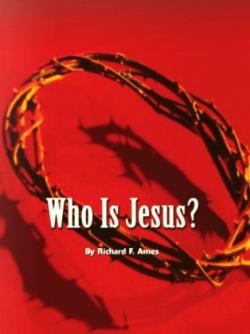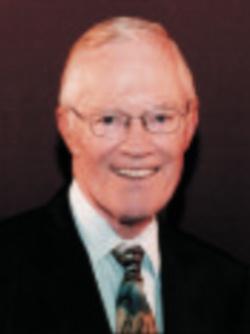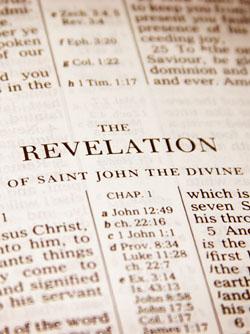The Trap of Ecumenism
Surprising as it may seem, the modern ecumenical movement— and its outcome—were prophesied long ago in the pages of your Bible. Those prophecies are coming alive today!
The world today faces serious problems—including terrorism, ethnic strife, crumbling moral foundations and environmental destruction—that threaten the future of human civilization. In the face of these global challenges, religious leaders of the world are seeking common ground. Their immediate goal is to work together to battle the demons of violence, war, poverty, hunger, social inequality, injustice, materialism and ecological devastation. The ultimate goal of this ecumenical endeavor is to establish one world communion that brings all churches—and eventually all religions—together in a "civilization of love" that embraces all God's children. This is a noble goal. But will it succeed, or will this well-meaning attempt come to a sudden and unexpected end? Surprising as it may seem, the modern ecumenical movement—and its outcome—were prophesied long ago in the pages of your Bible. Those prophecies are coming alive today!
The last decade of the 20th century witnessed several remarkable developments on the religious front. In 1994, Catholic and Protestant leaders signed a groundbreaking agreement titled Evangelicals and Catholics Together, which called for closer cooperation on social and cultural issues of common concern. A year later, Pope John Paul II issued an important encyclical, That They May Be One, to promote the cause of "Christian unity." In 1997, four major American church denominations—the United Church of Christ, the Reformed Church of America, the Presbyterian Church (USA) and the Lutheran Church agreed to full communion—ending centuries of division.
Perhaps the most significant development—called by some the "ecumenical event of the century"—occurred in 1999, when Lutherans and Roman Catholics signed a historic accord on the doctrine of justification, the very issue that triggered the Protestant Reformation and shattered the "unity" of western "Christendom." This landmark agreement was signed in Augsburg, Germany on August 31, 1999—Reformation Day in the Lutheran churches—exactly 482 years after Martin Luther nailed his 95 Theses onto the door of a church in Wittenberg, Germany. Christian Century magazine states that this agreement was "a dramatic step toward resolving a 16th century dispute that was at the heart of the Protestant break from the Roman Catholic Church" (October 27, 1999, p. 1,019). Fifteen months later, in January of 2001, the Lutheran and Episcopal churches ended centuries of division by signing an accord to share clergy, churches and mission work. These historic agreements are part of a broad-based ecumenical movement that has "inspired extraordinary dialogues and built bridges across ancient ecclesiastical and theological canyons" (Denver Post, Nov. 1, 1999). That movement seemed to gather steam as professing Christians anticipated what they considered the 2,000-year anniversary of the birth of Jesus Christ.
Pope John Paul II has been a prime mover in the push to unite the "Christian world." Under his auspices, the Roman Catholic Church is engaged in dialogues with Jews and numerous Protestant groups. High on the Roman Catholic priority list is an accord with the Eastern Orthodox Church that holds sway over much of Eastern Europe—once a major part of Western "Christendom". In 1982, John Paul II became the first pontiff to visit Britain since the Reformation. In October 2000, he received Queen Elizabeth II in a private audience in Rome. In her remarks the Queen stated: "I trust we shall continue to advance along the path which leads to Christian unity" (San Bernardino Sun, Oct. 18, 2000). The Pope commented that "there can be no turning back from the ecumenical goal we have set for ourselves in obedience to the Lord's command" (BBC News, Oct. 17, 2000).
In January 2002, John Paul II hosted a historic gathering of leaders representing the major religions of the world in the Italian town of Assisi, birthplace of the medieval monk known as Saint Francis. As they prayed together, the pontiff urged religious leaders to condemn violence and war and work in unity to promote peace. Ironically, at the close of a remarkable ecumenical decade, the Vatican office in charge of doctrine issued an official document declaring that the Catholic faith is the sole path to salvation, that non-Christian faiths are "gravely deficient" in their beliefs, that Protestant churches are not "sister churches" and that "the one holy catholic and apostolic Church [Rome] is not sister but mother of all the particular [Christian] churches (Los Angeles Times, Sept. 6, 2000).
Just what is going on? What is the real significance of the dramatic push toward so-called "Christian unity" and the harmonization of the world's religions? Why is it occurring now, and where will it lead?
In a remarkable prophecy given more than 2,700 years ago, the prophet Isaiah describes the judgment of a mysterious woman called a "daughter of Babylon… the Lady of Kingdoms" who says in her heart "I am, and there is no one else besides me; I shall not sit a widow, nor shall I know the loss of children" (Isaiah 47:1–11). In Bible prophecy, a woman often symbolizes a church. In this case, the spiritual roots of the woman are linked to the ancient practices of pagan Babylon. She asserts that she is like no one else (i.e., that she is the one true church) and that she will make an effort to regain her lost or separated children (daughters). It is no coincidence that the recent document issued by the Vatican echoes these very same sentiments.
In the book of Revelation, the Apostle John refers to this same mysterious woman who "glorifies herself… lived luxuriously" and says "I sit as a queen, and am no widow" (Revelation 18:7). However, John reveals this woman is called "the great harlot… the mother of harlots… with whom the kings of the earth have committed fornication, and the inhabitants of the earth were made drunk with the wine of her fornication" (Revelation 17:1–6). This strong language describes a great false church that has spawned daughter churches, all of which are deeply involved with the politics of this world and have spread false religious teachings around the globe. There is only one church on Earth, which also sits on seven hills, fitting the description of this mysterious woman (see Revelation 17:9). Bible prophecy indicates that this "mother church" will be actively involved in an attempt to bring her "daughters" back into her family just before the return of Jesus Christ (see Revelation 17:5; 19:2).
But what will ultimately convince the skeptical Protestants, the wary Eastern Orthodox and members of the world's other religions that the leader in Rome is the one true servant of God? The Apostle John records that a "lamb-like" individual (a leader falsely professing Christianity) will come, who "performs great signs, so that he even makes fire come down from heaven… and he deceives those who dwell on the earth by those signs" (Revelation 13:13–14). The Apostle Paul calls this person "the man of sin" who receives miracle-working power, from Satan, that convinces unsuspecting people to believe lies, leading to a falling away from biblical truth (2 Thessalonians 2:1–12). Paul pinpoints these events as occurring just before the Second Coming of Jesus Christ.
Many prophecies reveal that this great religious leader, and the system over which he presides, will suddenly collapse and be destroyed when Christ returns (Revelation 17:16; 18:8, 16–17; 19:20). The Bible reveals that human efforts to unite professing Christians, and to harmonize the religions of the world, are leading mankind into a trap that will ultimately fail. We need to watch world events, and seek the truth in God's word (2 Thessalonians 2:13–15), because ancient prophecies are coming alive today!
—Douglas S. Winnail






